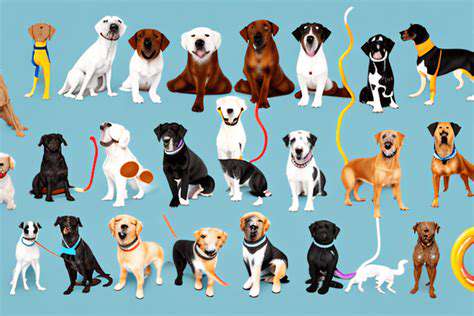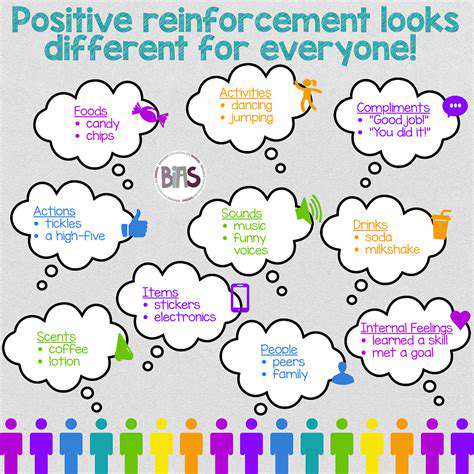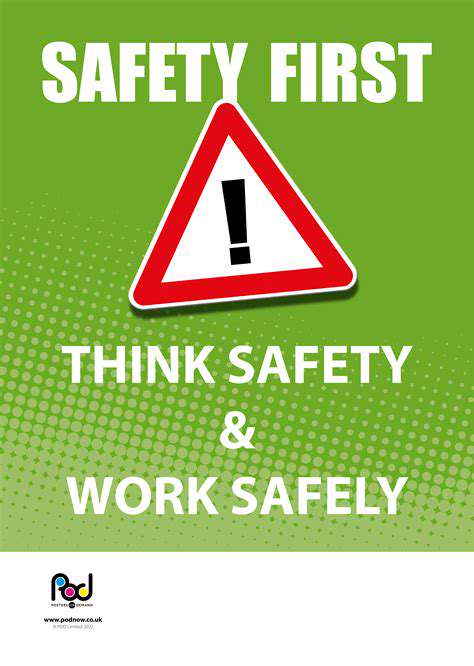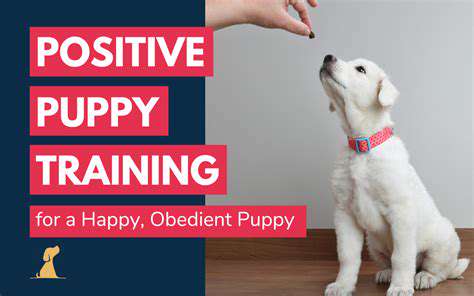Loose Leash Liberty: Training Your Adult Dog Not to Pull
The Importance of Loose-Leash Walking
Benefits of Loose-Leash Walking
Loose-leash walking isn't just about avoiding leash pulling; it's about fostering a stronger, more positive relationship with your dog. A dog who walks comfortably and calmly beside you is a dog who trusts you as their leader and enjoys the experience of being out and about. This positive reinforcement builds confidence in both you and your dog. By teaching loose-leash walking, you're communicating clear expectations, creating a more enjoyable walk for everyone, and improving your dog's overall well-being. This improved connection translates into better obedience, more effective communication, and a happier, more fulfilled canine companion.
The benefits extend beyond the immediate walk. A dog who understands and responds to loose-leash cues demonstrates better control in various situations. They are less likely to pull on the leash when encountering distractions, such as other dogs or squirrels. This improved control also contributes to a safer environment for both you and your dog, preventing potential accidents or injuries. Moreover, a calm and focused dog walking politely beside you is a sight that can command attention and admiration from other dog owners, solidifying your reputation as a responsible pet owner.
Techniques for Loose-Leash Success
Implementing a systematic approach is key to success in loose-leash training. Start in a quiet environment, minimizing distractions. Reward your dog for any movement in the right direction, even if it's just a slight shift toward a loose leash. Use positive reinforcement techniques, such as treats, praise, and toys, to motivate your dog and reinforce the desired behavior. Consistency is paramount; practice these techniques regularly, even for short periods each day. Be patient and understanding, as learning takes time and effort for both you and your dog.
Understanding your dog's body language is crucial. If your dog starts to pull, gently redirect their attention back to you. A change in direction or a pause in your walk can sometimes be enough to get them to focus again. Be mindful of your own body language as well. If you're tense or frustrated, your dog will likely pick up on it, making the training process more challenging. A calm, confident demeanor on your part is essential for successful loose-leash training.
Utilizing training tools such as a front-clip harness can be helpful in managing leash pulling. By properly attaching the leash to your dog's harness, you can reduce the amount of pulling and encourage a more natural walking gait. Consider incorporating various training methods, such as lure-reward or marker training, to cater to your dog's learning style and preferences. Consistent training sessions, positive reinforcement, and understanding your dog's body language are essential for achieving consistent success in loose-leash walking.
Identifying the Root Causes of Pulling
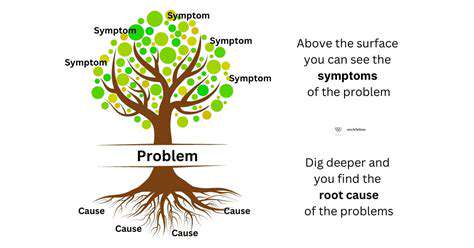
Uncovering the Underlying Issues
Pinpointing the root causes of pul, a multifaceted problem, requires a thorough investigation. This involves analyzing various contributing factors, moving beyond superficial symptoms to delve into the core issues driving the problem. Identifying the precise origin of pul is crucial for developing effective and targeted solutions. A holistic approach, considering multiple angles, is essential for a comprehensive understanding.
A detailed analysis of the historical context and current circumstances surrounding pul occurrences is necessary. This includes examining the sequence of events that led to the problem, considering environmental influences, and evaluating any potential systemic issues that might be at play.
Examining Environmental Factors
Environmental factors play a significant role in the manifestation of pul. These factors can range from the physical environment, such as exposure to pollutants or harsh weather conditions, to the social and economic environment, which can influence individual susceptibility. Understanding these external forces is crucial to preventing future occurrences.
Careful consideration must be given to the specific environmental elements that might be contributing to the pul. This might include air quality, water contamination, or even noise levels. Analyzing the interplay between environmental factors and individual responses is paramount.
Assessing Individual Predispositions
Individual predispositions can significantly influence an individual's susceptibility to pul. This includes genetic factors, pre-existing health conditions, and lifestyle choices. Recognizing these individual differences is essential for tailoring preventative measures. Understanding how specific individuals may react differently to similar stimuli is key to effective intervention.
Moreover, psychological factors like stress, anxiety, and emotional well-being can influence the development of pul. A comprehensive analysis must take into account these personal aspects to gain a complete picture of the problem.
Analyzing Systemic Issues
Systemic issues can often contribute to the development and persistence of pul. These issues can include systemic failures in infrastructure, inadequate resource allocation, or gaps in policy implementation. Understanding how these systemic factors contribute to the problem is crucial for long-term solutions. Addressing systemic issues is often the most effective way to prevent the recurrence of pul.
Evaluating Technological Advancements
Technological advancements can offer valuable insights into the root causes of pul. Modern tools and techniques can help in data collection, analysis, and the identification of patterns. Employing these advancements can lead to a more objective and nuanced understanding of pul.
Furthermore, technological advancements may provide solutions to address some of the issues that contribute to pul. Implementing these solutions can prevent the recurrence and severity of the problem in the future.
Considering Socioeconomic Factors
Socioeconomic factors play an important role in understanding the root causes of pul. Factors such as poverty, lack of access to resources, and unequal opportunities can influence the prevalence and severity of the problem. Addressing these factors is crucial for creating a more equitable and sustainable environment.
Disparities in socioeconomic status can create a vicious cycle, making certain populations more vulnerable to pul. Understanding these disparities is critical for developing effective solutions that address the root causes of pul across all socioeconomic strata.
Harnessing the Power of Attention and Engagement

Understanding Attention Mechanisms
Attention mechanisms are a crucial component of modern deep learning models, particularly in natural language processing and computer vision. They allow the model to focus on specific parts of the input data when performing a task, enabling it to learn complex relationships and patterns. This selective focus is a significant improvement over traditional methods that treat all input data equally.
Essentially, attention allows a neural network to weigh the importance of different parts of an input sequence. This is achieved by calculating attention weights, which represent the relevance of each input element to the current task. This dynamic weighting mechanism is key to the model's ability to handle varying input lengths and complex dependencies.
Applications in Natural Language Processing
Attention mechanisms have revolutionized natural language processing tasks, such as machine translation, text summarization, and question answering. These models can now effectively capture the nuances of human language, understanding the context and relationships between words and phrases.
By focusing on the most relevant words and phrases, attention models can produce more accurate and nuanced translations. This enhanced understanding leads to significant improvements in the quality of generated text.
Applications in Computer Vision
In computer vision, attention mechanisms allow models to focus on specific regions of an image. This is particularly useful for tasks like object detection and image captioning. By understanding which parts of the image are most relevant to the task, the model can identify objects more accurately and generate more descriptive captions.
Focusing on the key features of an image, attention models excel at extracting meaningful information for tasks like image recognition and image segmentation.
The Mechanics of Attention Calculation
Attention mechanisms involve calculating attention weights, which determine the importance of each input element. These weights are typically calculated using a scoring function that takes into account the relationships between different parts of the input. This allows the model to dynamically adjust its focus based on the specific task and input data.
The scoring function often involves elements of dot product operations, which quantify the similarity between different parts of the input. This process is crucial to the model's ability to understand the context of the input data.
Benefits of Using Attention
Using attention mechanisms leads to several key benefits, including improved accuracy and efficiency in various tasks. Models equipped with attention can often achieve higher performance compared to traditional methods, particularly when dealing with complex and nuanced data.
The ability to focus on relevant parts of the input also reduces the computational load. This is because the model doesn't need to process every piece of data equally, leading to faster training and inference times.
Challenges and Future Directions
Despite the significant advancements, there are still challenges associated with attention mechanisms, such as the computational cost of calculating attention weights for large datasets. Researchers are continually exploring ways to optimize these calculations and improve efficiency.
Future research directions involve developing more sophisticated attention mechanisms that can better handle complex relationships in data. This includes developing models that can learn to attend to multiple features simultaneously and adapt to different input modalities.
Ethical Considerations
As attention models are increasingly used in critical applications, it's crucial to consider the ethical implications of their use. Bias in the training data can lead to biased outputs, potentially perpetuating existing societal inequalities. It is essential to carefully examine and mitigate these risks.
Careful consideration of the data used to train these models is paramount. Ensuring fairness and reducing bias is crucial for responsible development and deployment of attention-based systems.
Troubleshooting Common Challenges and Maintaining Momentum
Understanding Leash Tension
A crucial aspect of loose-leash walking is understanding the subtle cues of leash tension. A taut leash, even a slight one, can communicate to your dog that pulling is acceptable. Observing your dog's body language and adjusting your walking pace accordingly is key to maintaining a relaxed and positive experience. This means being aware of your dog's enthusiasm levels and adjusting your pace and distance from distractions to minimize the urge to pull. Proper leash handling is just as important as understanding the underlying reasons for pulling.
Recognizing the difference between a dog gently nudging the leash (which might be a sign of excitement or a desire to explore) and a forceful pull is essential. A gentle nudge doesn't necessarily require immediate correction; it can often be addressed by redirecting the dog's attention, while a forceful pull needs a more assertive response to firmly discourage the behavior. This requires a keen eye to distinguish between these subtle cues.
Managing Distractions
Dogs, especially young or high-energy ones, are easily distracted. These distractions can range from squirrels and other dogs to interesting smells and sounds. Anticipating and managing these distractions is vital for maintaining a successful loose-leash walk. This involves choosing appropriate walking routes, avoiding highly stimulating environments when possible, and consistently practicing loose-leash walking in various locations to help your dog adapt to different scenarios.
Using positive reinforcement techniques, like rewarding your dog for staying by your side and not pulling, can help your dog learn to focus on you instead of external stimuli. This proactive approach not only prevents pulling but also strengthens the bond between you and your dog by building trust and mutual understanding.
Rewarding Desired Behavior
Positive reinforcement is a cornerstone of effective dog training. When your dog walks calmly by your side without pulling, rewarding them immediately with a treat, praise, or a favorite toy reinforces this desired behavior. Consistent positive reinforcement creates a positive association with loose-leash walking, making it a more enjoyable and rewarding experience for both of you. This positive reinforcement method should be used consistently to build a strong foundation for future training.
Choosing the right reward is critical. High-value treats that your dog loves can be highly motivating, but praise and affection can also be effective rewards. The key is to make the reward immediately apparent to your dog, linking the desired behavior to a positive outcome.
Addressing Underlying Issues
Sometimes, pulling on the leash isn't just a matter of training; it can be a symptom of an underlying issue. Excessive energy, anxiety, or lack of mental stimulation can all contribute to pulling. A thorough understanding of your dog's needs and behaviours is crucial to addressing the root cause. This might involve addressing the dog's energy levels through appropriate exercise and play, or providing mental enrichment activities to keep them engaged.
If you suspect an underlying issue, consulting with a professional dog trainer or veterinarian can provide valuable insights and guidance. They can help you identify the root cause of the pulling behavior and develop a tailored training plan to address it effectively.
Consistency and Patience
Loose-leash walking is a learned behavior that takes time and consistent effort. Don't get discouraged if your dog doesn't master it immediately. Consistency in your training methods and a patient approach are essential for success. Practicing regularly, even for short periods, can gradually build your dog's understanding and reinforce the desired behavior. It's crucial to remember that progress takes time and that every dog learns at their own pace.
Celebrating small victories and acknowledging your dog's efforts along the way will keep the training process positive and motivating for both of you. This positive reinforcement approach is crucial for maintaining a strong bond and ensuring a successful training journey.
Read more about Loose Leash Liberty: Training Your Adult Dog Not to Pull
Hot Recommendations
- The Impact of Early Socialization on a Dog's Interaction with Other Animals
- Car Travel and Puppy Socialization: Making the Journey a Positive Experience
- The Importance of Early Environmental Exposure for Puppy Development
- Taking Your Puppy to the Vet: Positive Socialization Strategies
- Making Training a Positive Experience for Your Puppy
- Public Transportation and Puppy Socialization: A Step by Step Guide
- Safe Socialization: Allowing Others to Pet Your Puppy
- Helping a Puppy Who Struggles with "Stay"
- Positive Puppy Interactions: Making Meetings with New Friends Fun
- No Treats Needed? Training Basic Commands with Verbal Praise



